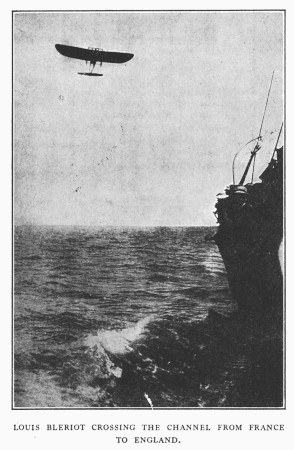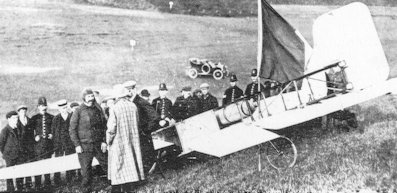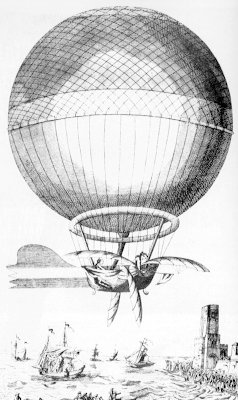Crossing the English Channel
Today, we try to cross the English Channel. The University of Houston's College of Engineering presents this series about the machines that make our civilization run, and the people whose ingenuity created them.
For thousands of years the English Channel has been a barrier that's tantalized us. That neck of cold, forbidding waters between England and France is, at one point, as little as twenty-one miles wide. We hear Shakespeare thinking aloud about Henry the Fifth's army as they prepare to cross the Channel to make war on France:
And thence to France shall we convey you safe,
And bring you back, charming the narrow sea,
to give you gentle pass.
In fact, crossing that cold, treacherous neck of sea has seldom been a gentle pass. It's never been easy to charm those waters.
So it's not surprising that people have looked at many means for crossing it. The first time the channel yielded to anything other than a boat was in 1785. The French balloonist Blanchard crossed it soon after the first balloon ascent in Paris.
The most primitive means for crossing the Channel, of course, is swimming. And it seems odd that we have no records of anyone trying to swim the Channel before 1872 -- a century after it was flown. The first person to succeed was Matthew Webb, who swam it three years later, in 1875. It took him twenty-two hours.
Like ballooning, heavier-than-air flight was immediately drawn to the Channel. In 1908 the London Daily Mail offered a £1000 prize for the first Channel flight. That was only five years after the Wright Brothers and two years after the first European flight. The French flyer Louis Bleriot won the prize a year later.
Then, in 1979, a strange 75-pound airplane called the Gossamer Albatross won the £100,000 Kremer prize for the first human-powered airplane to fly the Channel. For three hours, pilot Bryan Allen pedaled its propeller and flew it into the record books.
Most recently, we've crossed the English Channel from below by tunneling under it. But that grand engineering feat is really old wine in a new skin. The idea goes all the way back to the time of Napoleon. The English and French actually began a tunnel as long ago as 1881, but the British aborted it for fear it could serve the French as an invasion route. The British started another tunnel in the late 1970s, but they had to abandon it for lack of money.
In the end, England and France put their fear of one another aside and completed a joint Channel Tunnel in 1994. To build that Chunnel, as it's called, they drilled two main train tunnels, with a smaller access tunnel between them, through the chalk marl beneath the water. The French drilled their tunnels out from Calais, the British from Folkestone. And they joined in the middle.
So what's left? I suppose the next project will be a bridge, not that it strikes me as practical -- it just seems like the kind of challenge that engineers won't be able to resist indefinitely.
I'm John Lienhard, at the University of Houston, where we're interested in the way inventive minds work.
(Theme music)
For more on the matter of tunneling, see the proceedings of the Smithsonian Institution's symposium on its tunneling exhibition, Down Under: Tunnels Past, Present, and Future, National Museum of American History, Saturday, October 23, 1993. (The proceedings are still in press at this writing.)
This is a revised version of Episode 58. I say more about tunneling as a metaphor in Episodes 51, 664, 849 and 855. For a more technical look at tunneling, try the Engines SEARCH function, using the word "tunnel".

Photo of Louis Bleriot's XI airplane flying
the English Channel on July 25, 1909

Bleriot's Airplane where it landed near Calais

A contemporary artist's flawed impression
of the Jean-Pierre Blanchard/John Jeffries
Channel crossing in 1785.